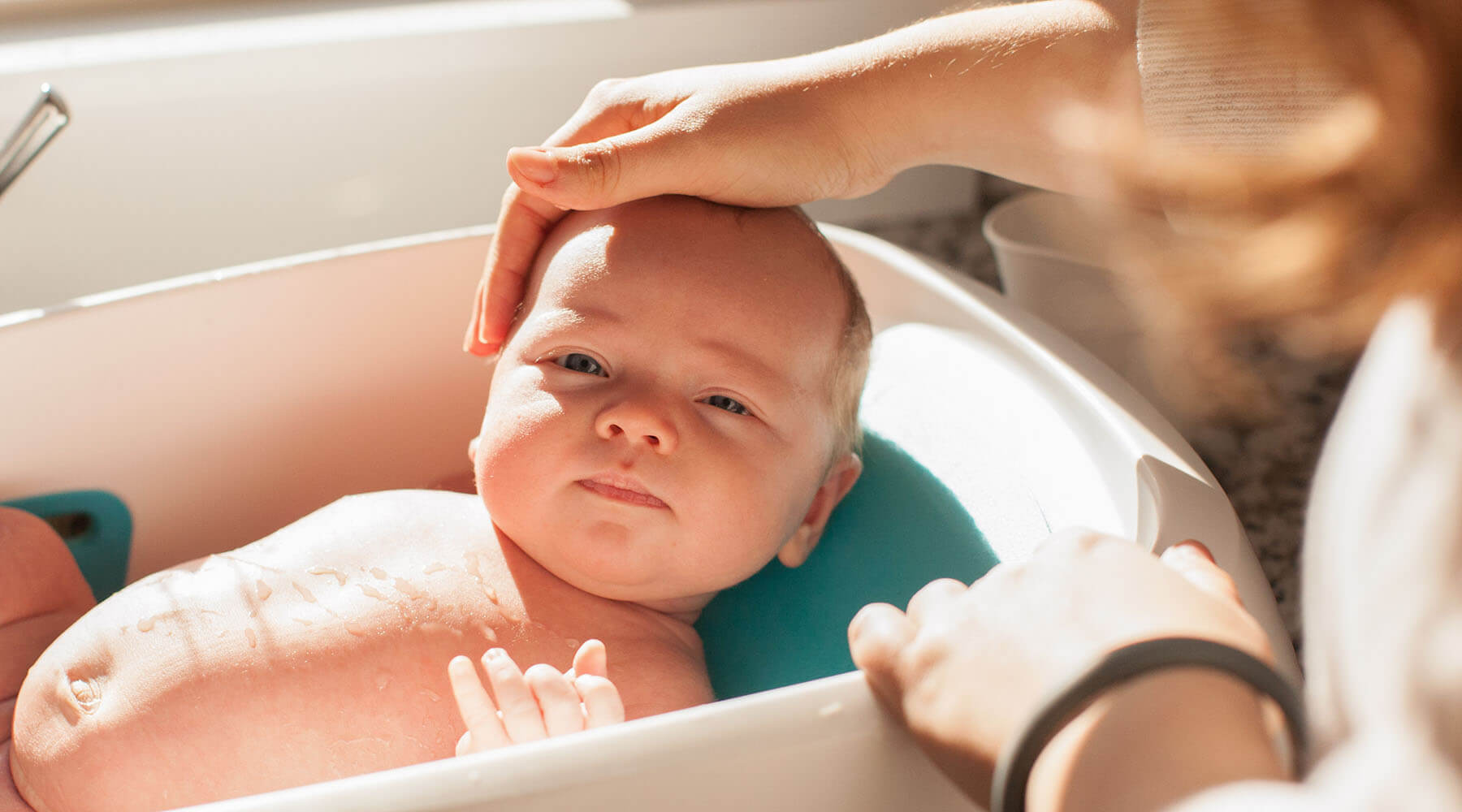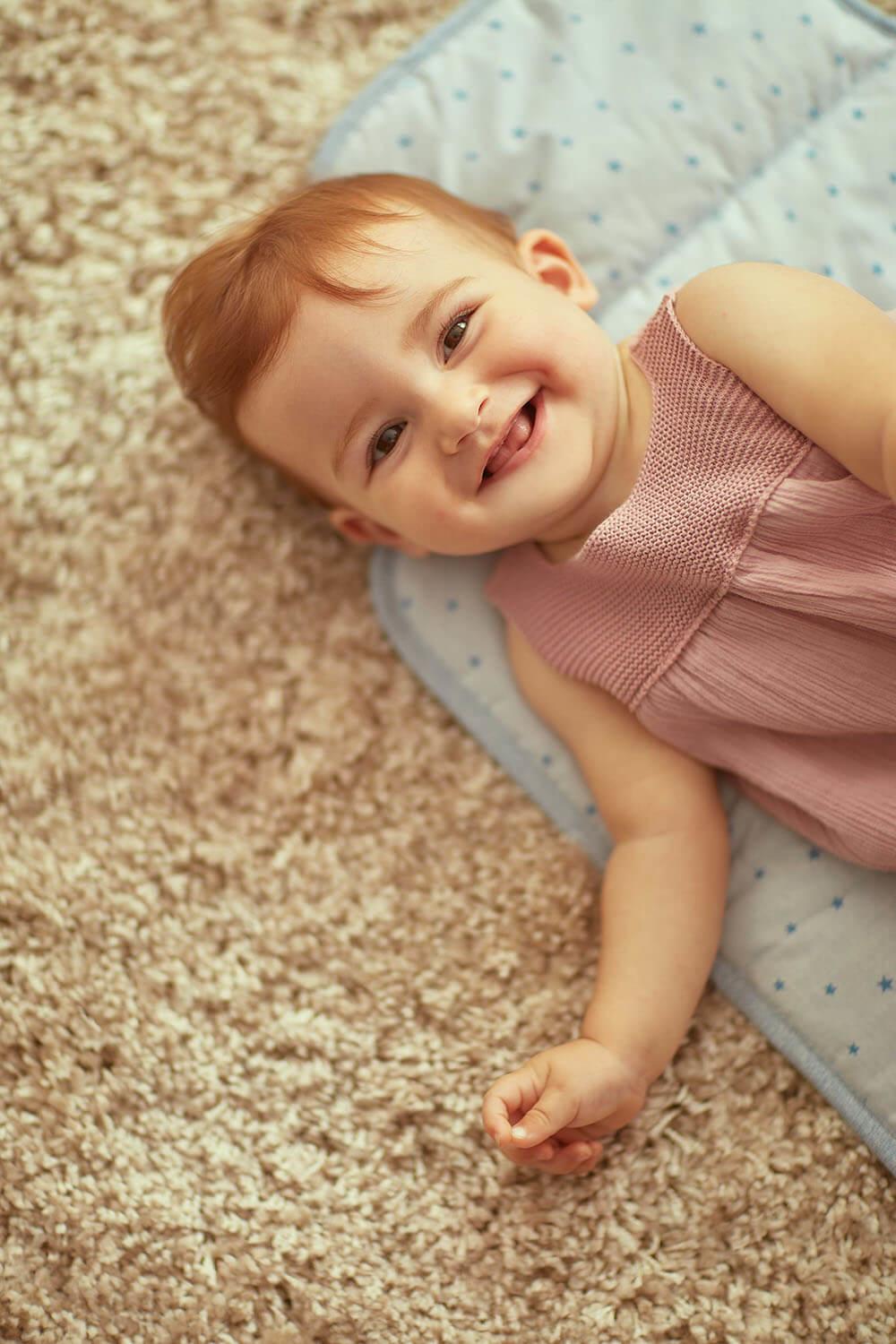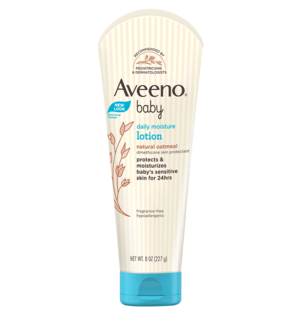
Have you noticed rough spots, scaly patches, or even peeling skin on your baby’s otherwise satiny soft body? Don’t fret! Baby dry skin is very common, especially during the cold, moisture-deprived months of winter. Though it can be persistent and slightly bothersome for your little one, treating dry skin on babies requires a few thoughtful changes to your existing daily routines.
What Causes Baby’s Dry Skin?
Dry Climate and Over-Bathing
Discovering dry skin on your newborn or infant will likely activate your sleuthing skills, prompting you to search out underlying causes. Two of the most common culprits are dry climates which cause “winter itch” and over-bathing with excess soap exposure, causing a dry skin referred to by doctors as “soap dermatitis.” In both cases, it’s important to understand that baby’s skin isn’t just softer than most adults, it’s also thinner: by at least 20% according to existing studies. This means that it’s more susceptible to environmental changes and more prone to losing moisture than an adult’s skin.
Sensitive Skin
Dry skin can also be a sign of sensitive skin reacting to a chemical trigger such as a laundry detergent, perfume, or lotion. Baby’s delicate immune system recognizes these foreign substances as potentially harmful and sends out a warning signal via the skin.
Genetics
Genetics may also play a factor such that if baby’s parents have regularly suffered from dry or sensitive skin, there’s an increased chance he or she will too. A few common skin conditions thought to be influenced by genetics include eczema, keratosis pilaris, and ichthyosis. Eczema, or atopic dermatitis, is a chronic, itchy condition that often appears as a red, dry rash on baby’s cheeks, forehead, or mouth. Keratosis pilaris may also appear on the cheeks, but is more typically found on the upper arms, thighs, or bottom. Finally, ichthyosis indicates a compromised skin barrier that can result in thick, scaly patches.
Vitamin and Mineral Deficiencies
Finally, vitamin or mineral deficiencies may also underlie baby’s dry skin, as our external barrier relies on these nutrients to stay healthy. Vitamin A, vitamin D, niacin, zinc and iron are all critical dietary components for maintaining soft, supple skin.

Can Dry Skin & Peeling be Prevented for Babies
The sight of baby’s skin peeling can be worrisome, but also motivating. The best way to prevent it is to get out in front of it with a few proactive dry skin remedies for babies.
Turn Up the Humidity : Avoid the dry air that causes dry skin by investing in a quality humidifier if not for the whole house, then at least for the rooms that baby stays in most often. The goal is to add water back into the air, keeping the environment at approximately 40% humidity.
Stick to Short Baths : The American Academy of Pediatrics suggests limiting baths to 10 minutes or less in order to keep baby’s skin from drying out.
Keep the Water Cool : A hot bath may sound relaxing, but it will actually draw out even more moisture from baby’s skin. Stick to lukewarm water instead.
Skip the Scented Soaps : Soaps with added chemicals for fragrance can often irritate baby’s skin. Instead, select fragrance-free, hypoallergic soaps, and skip the bubble bath products altogether. The AVEENO® Baby Daily Moisturising Bath which is the number one pediatrician recommended brand because it’s been clinically shown to moisturize and relieve dry, sensitive skin. Not only is it made with natural colloidal oatmeal, but it’s also tear free, paraben and phthalate-free!
Pat Dry : Vigorously rubbing baby dry after a bath will actually remove both moisture and essential skin oils. Instead, gently pat dry.
Moisturize and Cover : Regularly apply a moisturizer before getting dressed in the morning or putting on pajamas at night, paying particular attention to areas where baby’s skin is peeling. Be sure to use an ointment or cream, which is thicker than a lotion. If you haven’t tried AVEENO® Baby Daily Moisture Lotion yet, you and baby are both in for a treat! Made with natural oatmeal and dimethicone skin protectant. It moisturises baby's sensitive skin for 24 hours*
*Aveeno baby daily moisture lotion is proven for 24 hours moisturizing results. Clinical study C11-C179, Jul 2011Monitor Changes : Tracking when baby’s dry skin occurs along with any related symptoms and where they are occurring (e.g. “baby dry skin on face”) will be helpful in identifying the causes including distinguishing between normal dry skin and a potential underlying skin condition.

How to Identify & Help A Baby’s Dry Skin - Hero Image - Aveeno
For Newborns (0 – 2 months)
The first step after discovering dry skin on your newborn is to prewash – or rewash – the fabrics he or she is coming into contact with using a mild, fragrance-free, or even “sensitive skin” detergent. Skip the fabric softeners and dryer sheets completely.
Then, adapt bath time. Noting the tips listed above, limit both the frequency and duration of baths to twice per week with diligent spot cleans as needed in between.
Finally, go the extra mile with added moisture by using a cool-mist humidifier for their sleeping space and lathering on a fragrance-free, hypoallergenic moisturizer every night and especially right after their bath.
For Infants (2 months – 1 year old)
As baby ages and shows more enjoyment in the tub, it will be important not to overstay and risk drying out their skin. So in addition to keeping to the less than 10 minutes rule, consider making baby’s post-bath moisturizing massage even more fun than splash time. Use the time to sing songs, bond, or even meditate together.
When baby turns into a drool monster on account of teething, keep plenty of fresh bibs and cloths on hand to wipe up excess saliva or mucus from a runny nose. Keep in mind that cotton and bamboo are softer, more skin-friendly options than synthetic fabrics options.
For Toddlers (1+ years old)
Beyond continuing the moisturizing routines you’ve already developed for managing baby dry skin at earlier ages, you’ll want to take on some extra steps for your now more active toddler. During winter play, this means bundling up thoroughly to keep skin from being exposed to the harsh, dry air. During summer play, be sure to lather on a broad-spectrum sunscreen at least every two hours, and always rinse your child off after playing in a pool to remove chemical exposures.
For many of us, occasional dry skin is just a part of life. However, that doesn’t mean that you have to simply accept those scaly spots or peeling skin on baby’s delicate outer layer. With just a few adjustments, like shorter baths and more regular moisturizing, you can address baby dry skin and enjoy even softer snuggles
